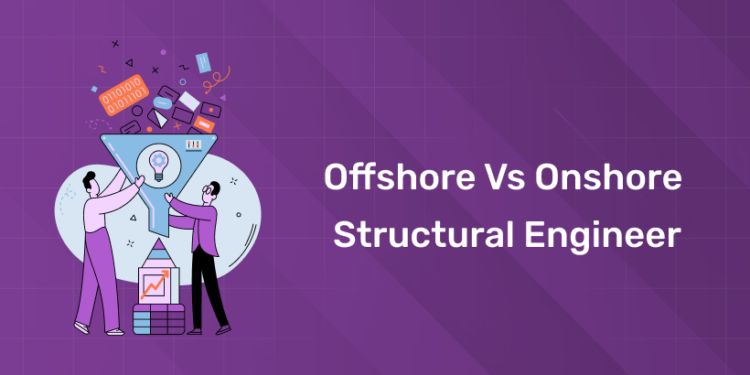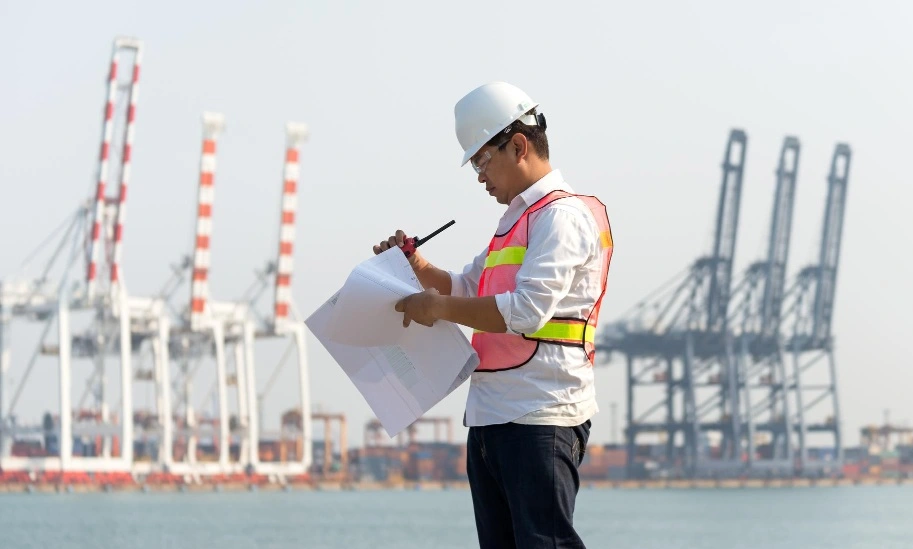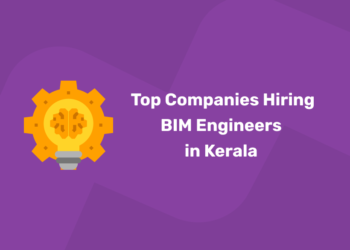Table of Contents
For weeks, crews live on a ten-foot steel platform from the Eiffel Tower in the North Sea, withstand 100-foot waves and 120-mph winds. At the same time, in Dubai, engineers work on the new skyscraper touching clouds, a city buzzing around it, and everyone going home every night. Both structures require highly skilled structural engineer,s and nothing else could compare.
It is not just money or a job title at stake when choosing a structural engineer career in offshore or onshore. It decides whether you spend years spinning in the middle of the ocean or living close to family, creating the skyline of New York city. And it has never mattered more to this decision in 2026 when offshore wind farms explode and cities grow faster than ever. Until you can determine exactly which side best fits your dreams, risk tolerance, and lifestyle, then this will be the definitive choice for you: if thou and i could not choose right, then … and if thousands of engineers quietly regret to be wrong.
What is Offshore Structural Engineering?
Outshore structural engineering is focused upon structures that live in water oil and gas platforms, floating production units, subsea templates, offshore wind turbine foundations, and jacket platforms that lie beneath the seabed. These giants are under constant attack from waves, currents, salt corrosion, hurricanes, and fatigue loads that never stop.
Engineers design for dynamic forces that onshore structures rarely see. A typical fixed jacket platform withstands a 100-year storm event with wave heights over 30 meters. Foundations go 100+ meters into the seabed in water depths that now reach 3,000 meters for some floating systems. Software like SACS, SESAM, or ANSYS Aqwa becomes daily tools because hand calculations no longer work when water moves the entire structure.
In 2026, the real growth comes from renewable energy. The global offshore wind market adds 30–40 GW every year. Each turbine foundation monopiles that weigh more than 1,500 tons or floating spars in deep in the Atlantic needs structural engineers who understand hydrodynamics, soil-structure interaction under cyclic loading, and corrosion-fatigue life of 30+ years. Companies like Ørsted, Equinor, and Vattenfall hire hundreds of offshore structural engineers right now for projects in the North Sea, East Coast USA, Taiwan, and South Korea.
The work splits into front-end conceptual design, detailed analysis, fabrication support, and installation engineering. Many engineers spend time offshore during load-out, installation, and hook-up phases, standing on the actual structure as cranes lift 8,000-ton topsides.
What is Onshore Structural Engineering?
1: What is the primary purpose of structural design?
Transform Your Career with Our Structural Design Course!
Unlock Your Potential in Structural Design! Gain expert knowledge in designing robust structures and advance your career in the construction and engineering fields. Limited spots available! 🌟
Know MoreKey Differences Between Offshore and Onshore Structural Engineering
The gap between the two fields goes far beyond location.
- Load Types & Analysis Complexity Offshore structures face wave slamming, vortex-induced vibrations, fatigue spectra that require millions of load cases, and accidental events like ship collisions or explosions. Onshore focuses mainly on static + wind + seismic, with far fewer load combinations.
- Design Life & Safety Factors Offshore platforms design for 25–40 years with almost no access for major repairs. Safety factors run to 3.0–5.0 on critical members. Onshore buildings target 50–100 years but allow inspections and repairs, so factors stay closer to 1.6–2.0.
- Corrosion & Material Selection Salt air destroys steel fast. Offshore uses heavy corrosion allowances, cathodic protection, exotic alloys (duplex stainless), or concrete coatings. Onshore paints steel or uses galvanizing and expects paint maintenance every 10–15 years.
- Fabrication & Installation Offshore modules build in yards in Korea, China, or Singapore, then ship thousands of miles and lift with the world’s largest cranes (like Sleipnir’s 20,000-ton capacity). Onshore builds piece by piece on site with tower cranes most projects never exceed 300 tons per lift.
- Standards & Certification Offshore follows API RP 2A, ISO 19900 series, DNVGL, ABS, or Lloyd’s Register with third-party verification mandatory and class approval required before steel cuts. Onshore uses local building codes with plan-check approval by city or county engineers.
- Project Schedules & Costs Offshore projects cost billions and run 5–10 years from concept to first oil/wind. Onshore towers finish in 2–4 years. A single design mistake offshore costs tens of millions; onshore mistakes fix more easily.
- Team Locations Offshore teams spread across continents conceptual design in London/Houston, detailed engineering in Mumbai or Seoul, fabrication in Batam or Geoje. Onshore teams usually stay in one or two cities.
Advantages of Offshore Structural Engineering
Higher pay tops the list. In 2026, experienced offshore structural engineers in the US or UK earn $140,000–$190,000 base plus bonuses, offshore allowances, and rotation uplifts that push total packages past $220,000–$300,000 for leads. European packages often hit €150,000–€220,000 plus full rotation benefits.
Rotations (typically 28/28 or 14/14) give half the year off while still earning full salary. Many engineers use the off time to travel, start side businesses, or spend with family without burning vacation days.
The technical challenge excites. You solve problems most engineers never see floating structures that move 20 meters in storms yet keep turbines spinning, or platforms that survive Arctic ice loads.
Resume value stands out. Ten years offshore makes you instantly hireable worldwide. The skills (fatigue analysis, non-linear soil-pile interaction, spectral fatigue, risk-based inspection) stay rare and valuable.
Renewable energy growth creates huge demand. Offshore wind developers fight for experienced jacket or floating foundation engineers. Governments target 140 GW offshore wind in Europe alone by 2030 and 30 GW in the US by 2030 thousands of new structures need design now.
Travel and adventure come built-in. Work in Norway, Australia, Brazil, Guyana, or Namibia. Live on platforms where helicopters bring you in and dolphins swim by during lunch.
Advantages of Onshore Structural Engineering
Stability and work-life balance win here. Go home every night, coach your kid’s soccer team, and avoid two-week isolation from family. No mandatory medicals, survival training, or helicopter underwater escape courses.
Career progression moves faster in many cases. Onshore firms promote to project manager or associate by age 35–38 because projects turn over quickly. Offshore leads often wait until their mid-40s for the biggest roles.
Variety stays broader. Design schools one year, hospitals the next, then stadiums or data centers. Offshore engineers sometimes spend entire careers on variations of jackets and topsides.
Location choice expands. Live almost anywhere with a major city. Offshore hubs limit to Houston, London, Aberdeen, Stavanger, Singapore, Perth, or Oslo unless you accept long commute flights.
Lower stress in daily life. No worry about tropical storms shutting down the platform or last-minute helicopter grounding that strands you offshore extra weeks.
Easier path to licensure and professional registration. Most PE/SE exams and experience requirements base on onshore work. Many offshore engineers struggle to get enough “responsible charge” hours for licensure.
Broader exit options. Onshore experience transfers easily to construction management, forensics, expert witness work, academia, or government. Pure offshore experience narrows future paths.
Transform Your Career with Our Structural Design Course!
Unlock Your Potential in Structural Design! Gain expert knowledge in designing robust structures and advance your career in the construction and engineering fields. Limited spots available! 🌟
Know MoreChallenges of Offshore Structural Engineering
Isolation hits hard. Two or four weeks away from family every month breaks some people after a few years. Relationships strain. Kids grow up fast during rotations.
Physical and mental demands stay high. Platform life means small cabins, shared bathrooms, constant noise, and strict safety rules. BOSIET training, HUET, and medical renewals every 2–4 years add up.
Boom-and-bust cycles hurt more. When oil prices drop or governments slow wind auctions, layoffs hit offshore teams first. The 2020 crash still scars many memories.
Travel weariness builds. Twenty-hour flights to Korea for fabrication follow-up, then straight to the helipad for offshore installation weeks turn into months away in a blink.
Limited mentorship for juniors. Seniors stay offshore or in client offices, so young engineers in low-cost centers sometimes learn mostly from other mid-level staff.
Regulatory complexity multiplies. Satisfy class societies, flag states, coastal states, and verification bodies simultaneously. One change triggers months of re-analysis.
Challenges of Onshore Structural Engineering
Pay ceiling stays lower. Even top onshore principals in major cities rarely break $200k total compensation unless they own equity in the firm. Staff engineers often plateau around $130k–$160k after 15 years.
Repetitive work creeps in. After your tenth mid-rise concrete building or twentieth warehouse tilt-up, the spark can fade for some personalities.
Cutthroat competition exists in many markets. Hundreds of qualified onshore engineers chase the same city projects. Standing out gets harder.
Client pressure stays intense. Developers push schedules and budgets relentlessly. Value engineering meetings that slash your beautiful design down to minimum code happen weekly.
Seismic or high-wind regions bring their own stress. Spending months perfecting non-linear pushover analysis or wind tunnel corrections for a supertall feels exhausting when the next project starts immediately.
How to Choose Between Offshore and Onshore Structural Engineering
Ask yourself these questions honestly:
- How much do you value money versus time with family and friends? If an extra $80k–$150k per year matters more than weekends at home, offshore wins.
- Do you crave adventure and technical depth or variety and stability? Love solving brand-new problems that scare most engineers? Offshore. Prefer mastering one domain deeply while seeing different building types? Onshore.
- Where do you want to live in five years? City with good schools and no need for passports every month → onshore. Willing to base in Houston, London, or Singapore and travel globally → offshore.
- How do you handle isolation and physical discomfort? Some thrive on platform life. Others feel depressed after three days at sea.
- What does the 2025–2030 market look like? Offshore wind will create more jobs than oil & gas decline will remove. Floating wind especially needs engineers desperately. Traditional onshore work stays steady but grows slower.
- Do you eventually want your own firm or equity? Onshore offers far easier path to ownership. Offshore expertise rarely translates directly to starting a successful consultancy.
Most engineers who switch from onshore to offshore never return. The money and challenge hook them. Those who try offshore first and then move onshore usually cite family reasons and never regret the stability.
Key Takeaways
- Offshore pays 30–80% more with half the year off, but demands rotations and harsh conditions.
- Onshore offers stability, family life, and broader career options at lower pay.
- Offshore wind in 2025–2030 creates the biggest hiring wave structural engineering has ever seen.
- Technical complexity offshore stays an order of magnitude higher fatigue, hydrodynamics, and installation engineering have no onshore equivalent.
- Both paths lead to proud careers; the “better” one is simply the one that matches your personality and life goals.
Conclusion
The offshore vs onshore structural engineer debate boils down to one question: Do you want to build the structures that power the world from the middle of the ocean, or the ones that shape daily life on land?
Choose offshore if you want higher pay, unmatched technical challenges, half the year off, and a passport full of stamps. Choose onshore if you want to see your family every night, live wherever you like, and still design iconic projects that define cities.
Both sides need brilliant minds right now. Offshore wind alone will require thousands of new structural engineers in the next decade, while cities keep rising everywhere.
Whichever path you pick, start moving today. The industry that waits for no one will reward those who commit first and hardest.
Your career. Your choice. Make it count.
Transform Your Career with Our Structural Design Course!
Unlock Your Potential in Structural Design! Gain expert knowledge in designing robust structures and advance your career in the construction and engineering fields. Limited spots available! 🌟
Know MoreFrequently Asked Questions
Which one pays more in 2026 – offshore or onshore structural engineer?
Offshore wins by a large margin. In the United States, a mid-level (5–10 years) offshore structural engineer earns $145,000–$185,000 base salary plus 30–100% uplift for rotation days, annual bonus, and retention pay. Total package often lands between $220,000 and $320,000. In Europe the base looks lower (€110,000–€160,000), but tax-free rotation allowances, accommodation, flights, and offshore days paid at double rate push real take-home past €200,000–€280,000.
Onshore engineers at the same experience level in big cities top out at $120,000–$155,000 total compensation, and only principals or partners in large firms break $200,000. In India, the gap is even bigger: senior offshore leads working for international operators or contractors easily cross ₹60–90 lakh per year while the best onshore packages in Mumbai or Delhi for similar experience stay around ₹30–45 lakh.
The money difference comes from harsh conditions, remote locations, and the fact that one delayed offshore project can lose $2–5 million per day. Companies pay whatever it takes to keep good people.
Can I switch from onshore to offshore later in my career?
Yes, and many do it successfully between ages 30–40. Most offshore contractors and operators look for at least 5–8 years of solid steel and concrete design experience first. They teach the offshore-specific parts (wave loading, fatigue, SACS software, API/DNV codes) through internal training once you join.
The hardest part is passing the medical and survival training (HUET – helicopter underwater escape). If you are fit and not scared of water, the switch is very realistic. Hundreds of engineers moved from building design to offshore wind in the last three years and doubled their pay within 18 months.
Is offshore structural engineering dangerous?
Day-to-day office work is not dangerous at all. The risk appears only when you go offshore during installation or hook-up phases. Modern platforms and wind-farm vessels have excellent safety records – far better than construction sites on land. In the North Sea, the lost-time injury rate is lower than UK onshore construction.
Big incidents (Piper Alpha 1988, Deepwater Horizon 2010) are extremely rare now because regulations became much stricter. You wear a survival suit, take a helicopter safety course, and follow swing-rope or gangway transfers. Most engineers who spend time offshore say the biggest daily danger is slipping in the galley, not the platform collapsing.
Can I switch from onshore to offshore later in my career?
Yes, and many do it successfully between ages 30–40. Companies love onshore engineers who already master software (SACS, SESAM, ETABS) and steel/concrete design. You usually need 6–18 months of training in wave loading, fatigue analysis, and offshore codes (API, ISO 19900 series, DNV standards). Several firms run conversion courses in Houston, London, and Singapore. The switch becomes harder after age 45 because of medical requirements and the physical side of rotation work.
Will offshore structural engineering jobs disappear when oil and gas decline?
No. Offshore wind is replacing oil and gas faster than jobs disappear. Europe plans 300 GW of offshore wind by 2050, the US targets 30 GW by 2030, and Asia (China, Japan, South Korea, Taiwan, India) adds another 150+ GW in the same period. Each gigawatt needs 80–120 turbine foundations plus substations — that equals tens of thousands of new structures. Floating wind in deep water will demand even more advanced engineers than fixed-bottom wind did. The next 20 years look busier than the last 20 years of oil platforms.
What is a typical offshore rotation schedule?
The most common schedules in 2026 are:
- 28 days on / 28 days off (2/2 or even-time) — usual for oil platforms and construction vessels.
- 14 days on / 14 days off (2/2 weeks) — popular in Europe for wind farm installation.
- 21 days on / 21 days off (3/3) — common in Asia and Australia.
You fly to the work location (helicopter or crew boat), live on the platform or vessel, work 12-hour shifts for the entire hitch, then fly home for the full off period with full pay. Many engineers love having half the year completely free.
Do onshore structural engineers ever go to site?
Yes, all the time. Onshore engineers visit construction sites weekly or daily during critical phases — foundation pours, steel erection, post-tensioning, or seismic brace installation. You wear a hard hat and boots, climb scaffolds, and solve problems face-to-face with contractors. However, you drive home every night (or stay in a hotel nearby for big out-of-town projects). No one locks you on site for weeks.
Which field gives better work-life balance?
Onshore wins easily for traditional balance. You work 40–50 hours a week in an office, leave at 6 PM, and enjoy evenings and weekends with family and friends. Offshore gives more total days off per year (182–200 days off on even-time rotation), but when you work, you are completely away — no quick trips home, no weekend visits. Many offshore engineers say the balance feels great after a few years; others burn out from the intensity and isolation.
What software skills matter most for each path?
Offshore must-know tools in 2026:
- SACS (Bentley) — industry standard for jackets and topsides
- SESAM (DNV) — deepwater and fatigue leader
- ANSYS Aqwa / OrcaFlex — hydrodynamics and mooring
- USFOS or FAHTS — non-linear pushover and collapse
- Python scripting for fatigue post-processing
Onshore must-know tools:
- ETABS + SAFE (CSI)
- STAAD.Pro or Robot Structural Analysis
- RAM Structural System / RAM Connection
- Revit Structure (BIM coordination)
- Tekla or SDS/2 for connection design
- SAP2000 and RISA for special projects
At the end of my career, which path leaves me with more money and freedom?
Offshore usually leaves engineers with far more savings because of the high pay and low living costs during rotations (food and accommodation free offshore). Many offshore engineers retire in their early to mid-50s with seven-figure portfolios and no mortgage. Onshore engineers who climb to partner level in a successful firm can match or beat that, but most staff-level onshore engineers retire at 65–70 with comfortable but not exceptional wealth. If pure financial independence is the goal, offshore plus smart investing wins for the majority.
Pick the path that matches your personality first — the money follows either way when you become great at what you do.
















